All about lemon-scented thyme

In nature, there are many plants that, by their mere appearance on the site, create beauty and comfort. They give the landscape an unusual look and attract with their pleasant aroma. One of the typical representatives of such crops is lemon thyme.
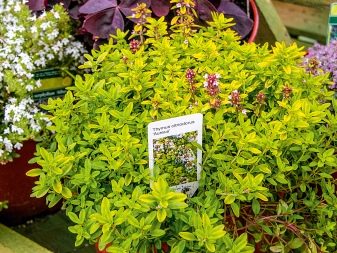
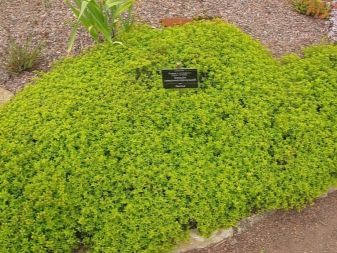
Description
Thyme and its medicinal properties were well known to our ancient ancestors, the first mention of this flower dates back to the 6th century. It is known that the tinctures of this herb were drunk by the warriors of Ancient Greece and Rome - they believed that the drink would give them strength, vigor and give them a boost of energy. It was around this time that thyme became widespread as an aromatic condiment in food preparation. The plant was brought to the countries of the Old World in the 11th century.
Thyme comes in many varieties. But lemon-smelling varieties are especially fond of. This species is the result of natural crossing of flea and common thyme. A distinctive feature of the culture is a delicate aroma with notes of lemon, anise and caraway seeds. Moreover, he smells not only flowers, but also stems and leaves.
Lemon-smelling thyme is an ornamental fast-growing shrub 12-15 cm tall, at the stage of flowering, it can stretch up to 20-30 cm due to the peduncles rising above the ground. The bushes are hummocky, up to 70-80 cm wide. The stems are erect, herbaceous, covered with a light gray pile. The root system is pivotal, branched.
It is slightly buried in the ground, so the culture is not particularly resistant to frost, it needs to be covered for the winter.

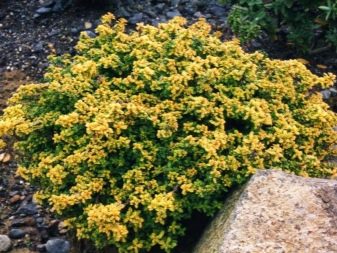
Leaves are dark green, young bushes have a slightly yellow tint. A pale edging runs along the edges. The length of the leaf plates does not exceed 1 cm, the edges are bent downward from above. The petioles are shortened. If you rub the leaves in your hands, you will instantly feel a bright aroma in the air.
During flowering, the lemon-scented thyme is abundantly covered with pale pink flowers of a small size. At the tips of the stems, they gather in racemose inflorescences. Flowering lasts all summer, pollination takes place with the help of bees. By the way, thyme is a good honey plant. At the end of flowering, bolls appear on the bushes, each with four walnut fruits.
Lemon thyme is ubiquitous not only in garden design. It is used as a source of beneficial oil for therapeutic purposes. This plant is considered to be a storehouse of micronutrients and macronutrients. It has found application in folk medicine as a wound healing and antimicrobial agent. Thyme is used for acute viral diseases, pathologies of the gastrointestinal tract, nervous excitability. In addition, the plant has gained recognition as a spice in the creation of Italian and Greek cuisine.
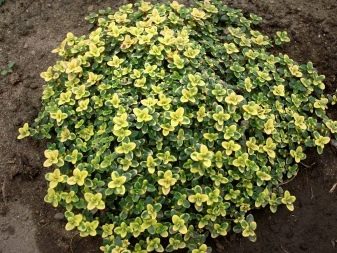
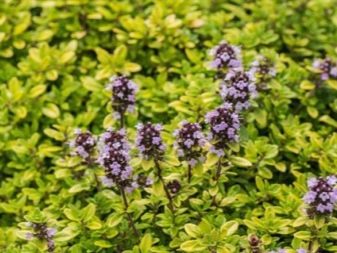
However, thyme is most popular in landscape design. It is an ornamental groundcover that covers the ground or alpine hill with a fragrant flowering carpet. Bushes are characterized by resistance to trampling, easily tolerate adverse external factors and successfully resist attacks of insect pests. In addition, the cultivation of thyme does not require special attention and care from its owners.
There is, perhaps, only one drawback - the requirement for compliance with crop rotation. Lemon-smelling thyme is undesirable to grow on the same plot for more than 4 years in a row. This plant should be used with caution for children and adults suffering from pathologies of the cardiovascular system, kidneys and liver.
Before use by pregnant women, it is advisable to consult with a supervising physician.

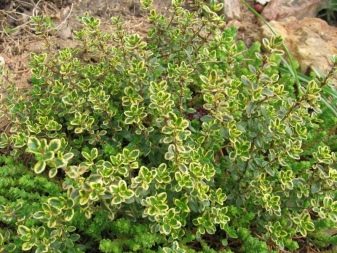
Varieties
To date, many varieties and varieties of lemon thyme have been bred. The most popular are the following options.
Donna Vale
It is a perennial plant 15-20 cm high. The leaves are bright green, bordered with yellowish specks. The stem is slightly pubescent. Abundant flowering, lilac.
Doone Valley is a drought-resistant crop, moisture stagnation is contraindicated for it. In this case, the plant is classified as fast-growing, therefore it is widely used as a ground cover.
In just a matter of weeks, it can close all the voids on the site.

"Silver Queen"
The bush is 20 cm high, up to 80 cm wide. The leaf blades are green, with a light edging along the edges. It blooms lilac, the aroma is pronounced. It is a good honey plant. It grows slowly. To achieve maximum splendor, the bushes must be trimmed in hot weather. In the winter months it needs protection from the cold.
This thyme is widely used in medicine, and not only in folk medicine, but also in official medicine. A medicinal decoction is prepared from it for the treatment of pneumonia and bronchitis. Infusions based on Silver Queen are used for gout, and also relieve bruises and arthritis. And the oil relieves pain, copes well with bruises and acne.
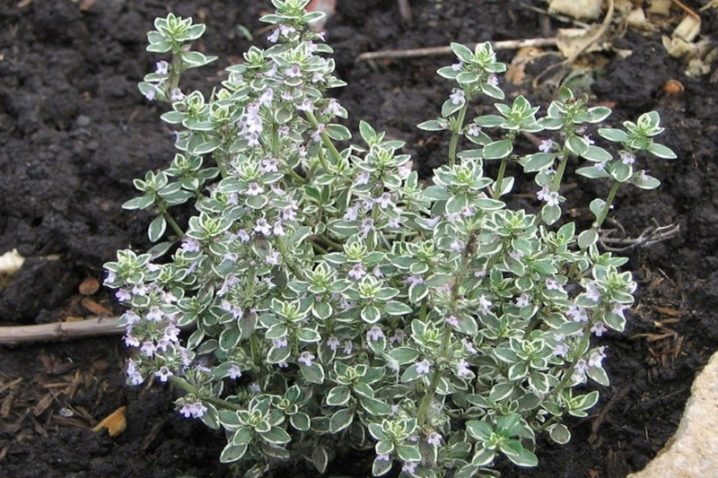
Golden Duarf
Typical subspecies of standard height lemon thyme with small bright green leaves. The flowers are pink and have a thick aroma. Unlike all other varieties, flowering is longer and lasts from the first days of June to the end of August.
Has good immunity. This thyme is not afraid of attacks of harmful insects, it endures cold weather.
The only condition for its full growth and development is fertile and moisture-consuming land.
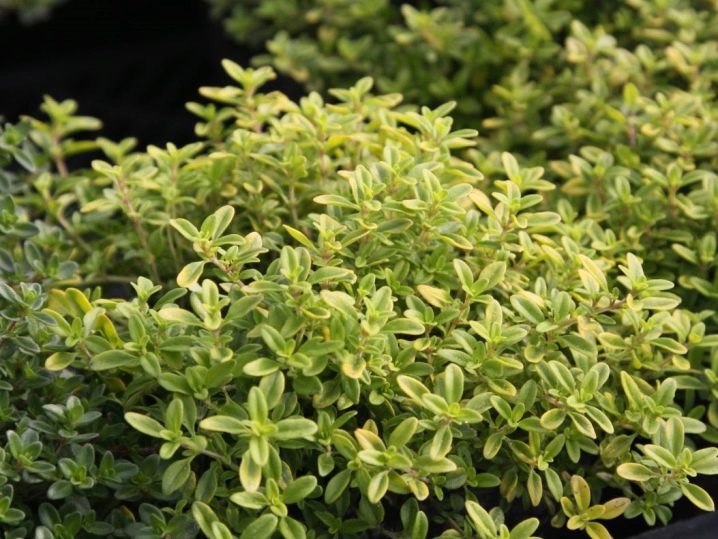
Bertram Anderson
Thymus citriodorus Bertram anderson is an ornamental variety of thyme that quickly grows with a colored carpet 8-10 cm high. The leaves are golden, the flowers are delicate, pinkish-lilac. For cultivation, he prefers neutral soils, does not require special care.
Other popular varieties for cultivation in the garden include:
- "Mystic Lemon";
- "Aureus";
- Archers Gold;
- Zambezi;
- Limoncello.
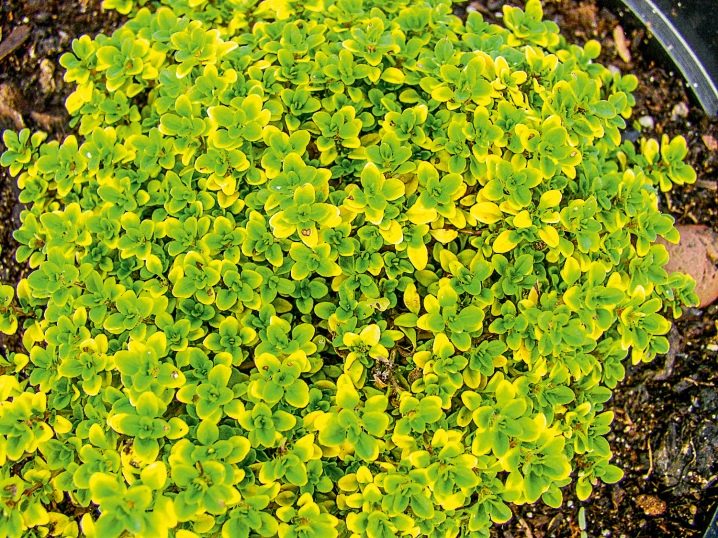
Landing
Planting lemon-scented thyme is not very difficult.
Location
Thyme prefers sunny locations with good lighting throughout the day. The landing site should be warm and well protected from drafts. If you plant lemon thyme in a shady place, the stems will stretch out and lose their decorative appeal.
Thyme can be planted in any season except winter. However, it should be taken into account that the plant must take root before the onset of severe frosts. Therefore, it is worth refraining from planting in late autumn.

The soil
The soil for lemon thyme must be fertile, light, well-drained and moisture-absorbing. On clay soils and loams, the roots will begin to rot and the plant will wither.
If it is not possible to select the optimal site, it is necessary to increase the permeability of the substrate by adding river sand and ensure good drainage.
Thyme prefers neutral or slightly alkaline soils; liming is used to lower the pH.
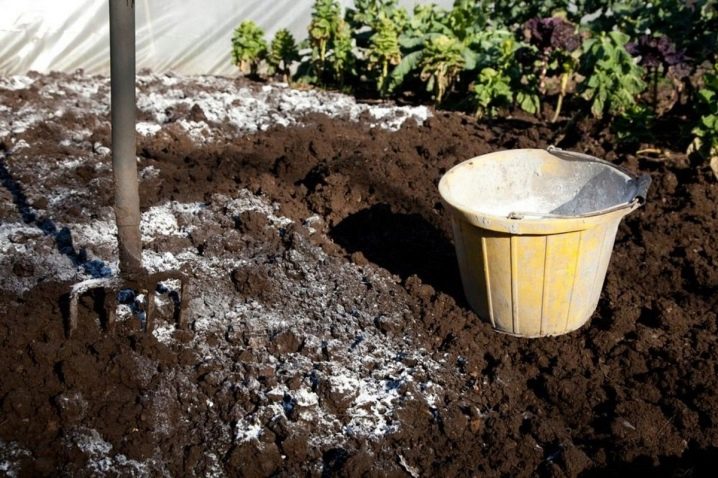
Care
Lemon thyme is one of the most unpretentious plants, it hardly needs any maintenance.
- Watering. Thyme does not require any watering, the only exception is a period of severe drought and prolonged heat. In such weather, light irrigation allows the plants to maintain a colorful and decorative look. Excess moisture can lead to the development of fungal infections.
- Top dressing. Fertilizers are also not needed for thyme.It is enough only when planting to add compost or horn flour to the ground.
- After the plant has faded, it needs to be pruned.so that the bush can maintain its beautiful shape and remain denser. Usually, approximately 2/3 of the entire stem is cut, down to its lignified part.

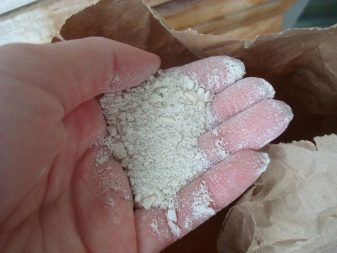
Sometimes lemon thyme is attacked by insects.
- Meadow weevil - is one of the most dangerous pests, attacks the plant at night. If damage is found, the plantings should be treated with insecticides immediately.
- Sandy slow - a long black beetle growing up to 10 cm. Damages fragrant plant stems. To combat it, baits and traps are used.
Thyme does not need special preparation for winter time. If the region is characterized by snowy winters, then the plant will feel quite comfortable under dense snowdrifts.
If a snowless winter is expected, it is advisable to cover the garden with spruce branches, since severe frosts negatively affect the state of the culture.
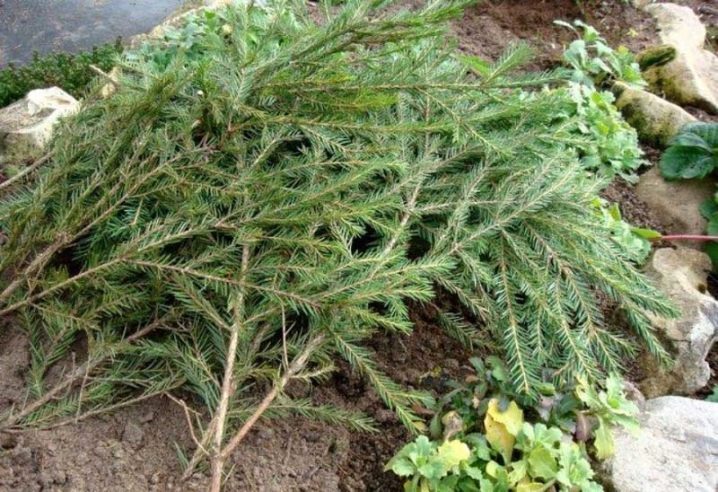
Reproduction
Lemon-smelling thyme is propagated in several ways.
Seeds
In this case, you will need seedlings - you can buy them at any specialized store, as well as a container filled with soil from river sand and peat. Seeds are spread over the surface of the ground, slightly sprinkled with substrate and placed on a windowsill. Then it is moistened with a drop method and covered with film or glass to create a greenhouse effect. As soon as shoots appear, the shelter is removed and the seedlings are transferred to a shady place. As the top layer of the earth dries up, young plants are gently sprayed with water from a spray bottle.
If mass planting is planned, then it is advisable to sow seeds for seedlings in a greenhouse or directly on the garden bed. In this case, you will have to regularly remove weeds that retard the growth and development of young bushes. If you plant thyme in an open area immediately after the snow melts, it will be able to please with the first flowering already in the current season.
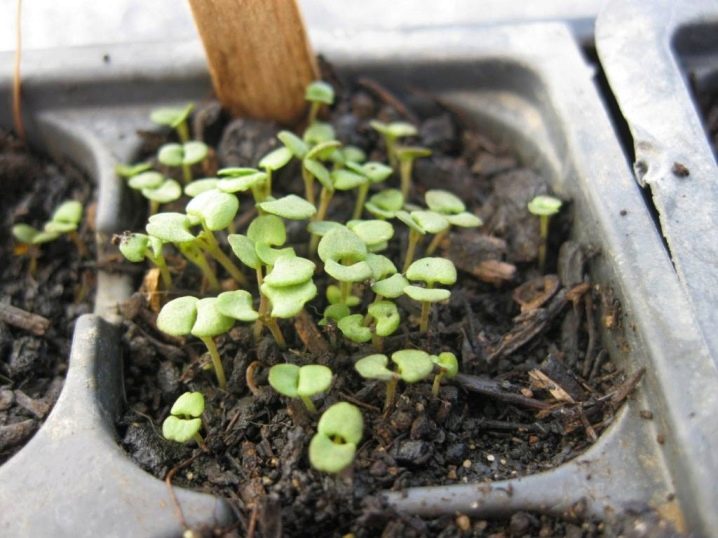
Cuttings
With this technique, you need to cut off small cuttings. To begin with, the planting material is placed in a container with moistened soil. And after a few weeks, when the roots appear, they are moved to open land, where it is planned to set up a thyme plantation. This method is popular due to its availability. In addition, you can resort to it throughout the growing season.
Tip: For low-growing bushes, the height of the cuttings should not exceed 2 cm.
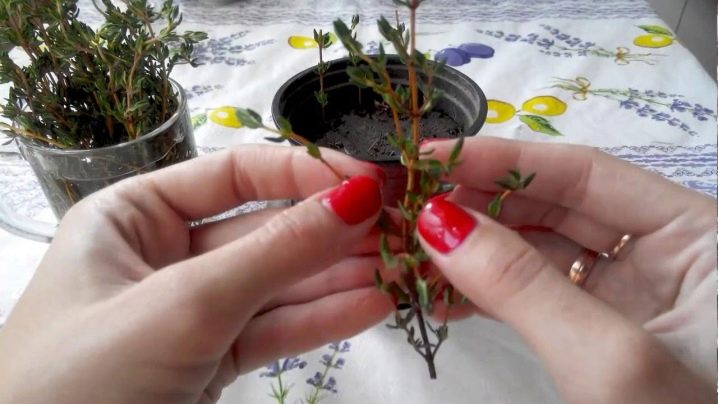
By dividing the bush
Another easy way. In this case, the bush is completely dug out, the roots are carefully separated, and planted in the place you like. 9-12 bushes are usually planted per square meter of the bed.
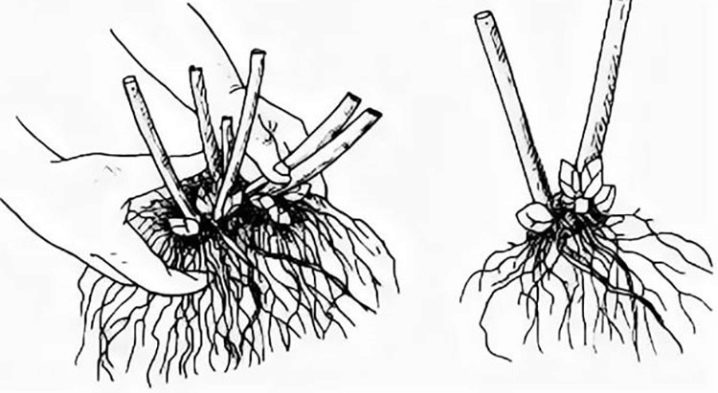
Application in landscape design
Lemon-smelling thyme has become widespread in landscape design. This is due to its decorative appearance and the ability to form colorful scented carpets on the site in a matter of weeks. It is planted on separate lawns, and is also included in the design of alpine slides and rockeries. Thyme looks especially impressive next to bulbous crops - irises, lilies and ephemerals.
Many people plant thyme instead of regular lawn grass. In this case, the carpet will have to be cut regularly and not allowed to bloom.
And if you plant a culture near a bench and a gazebo, then during your rest you can enjoy the aroma of this spicy herb.
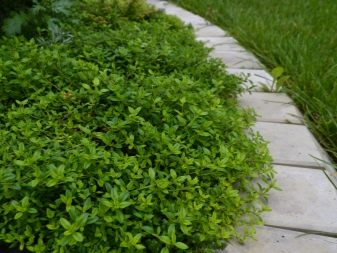
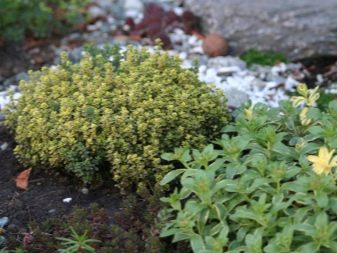








The comment was sent successfully.